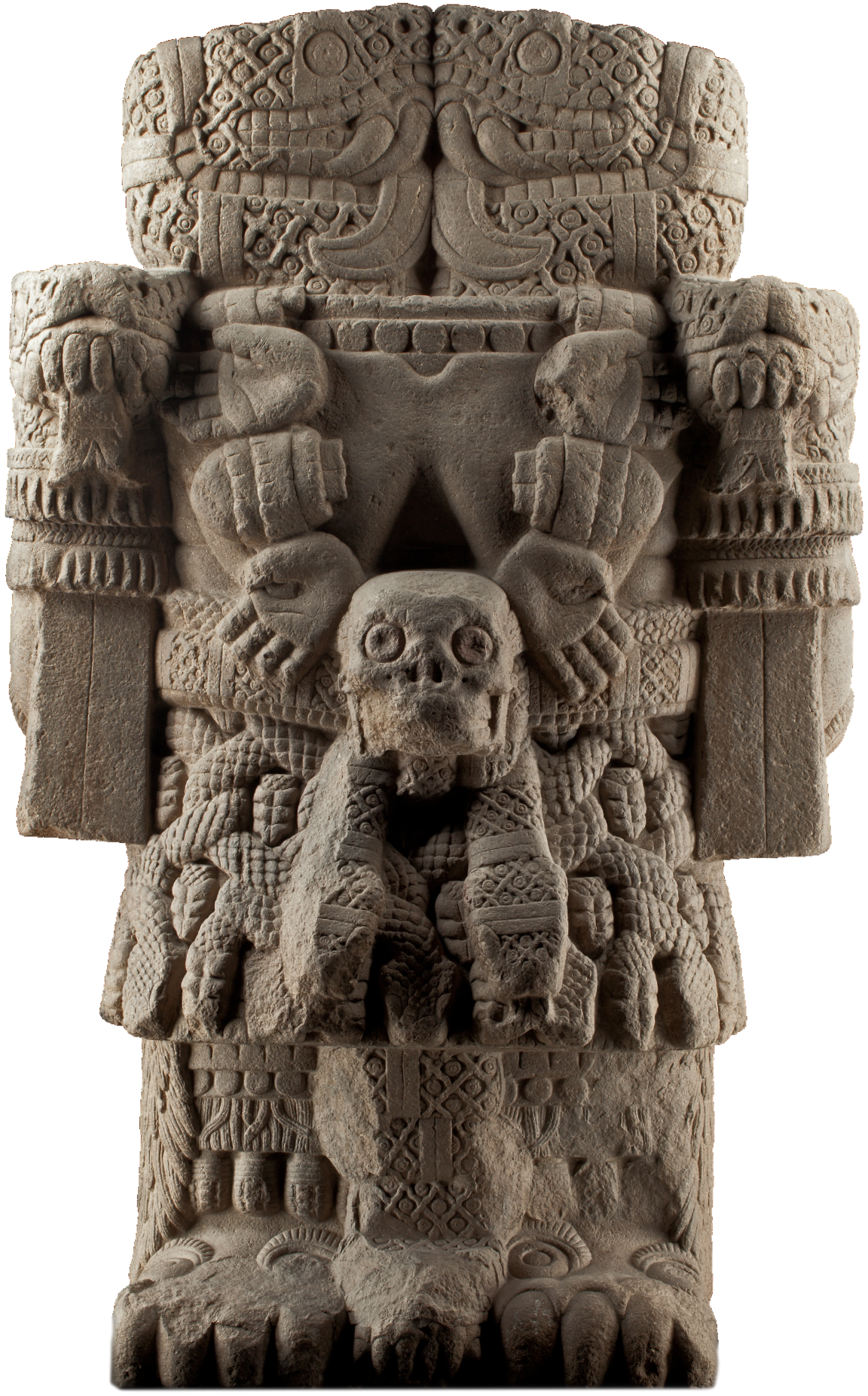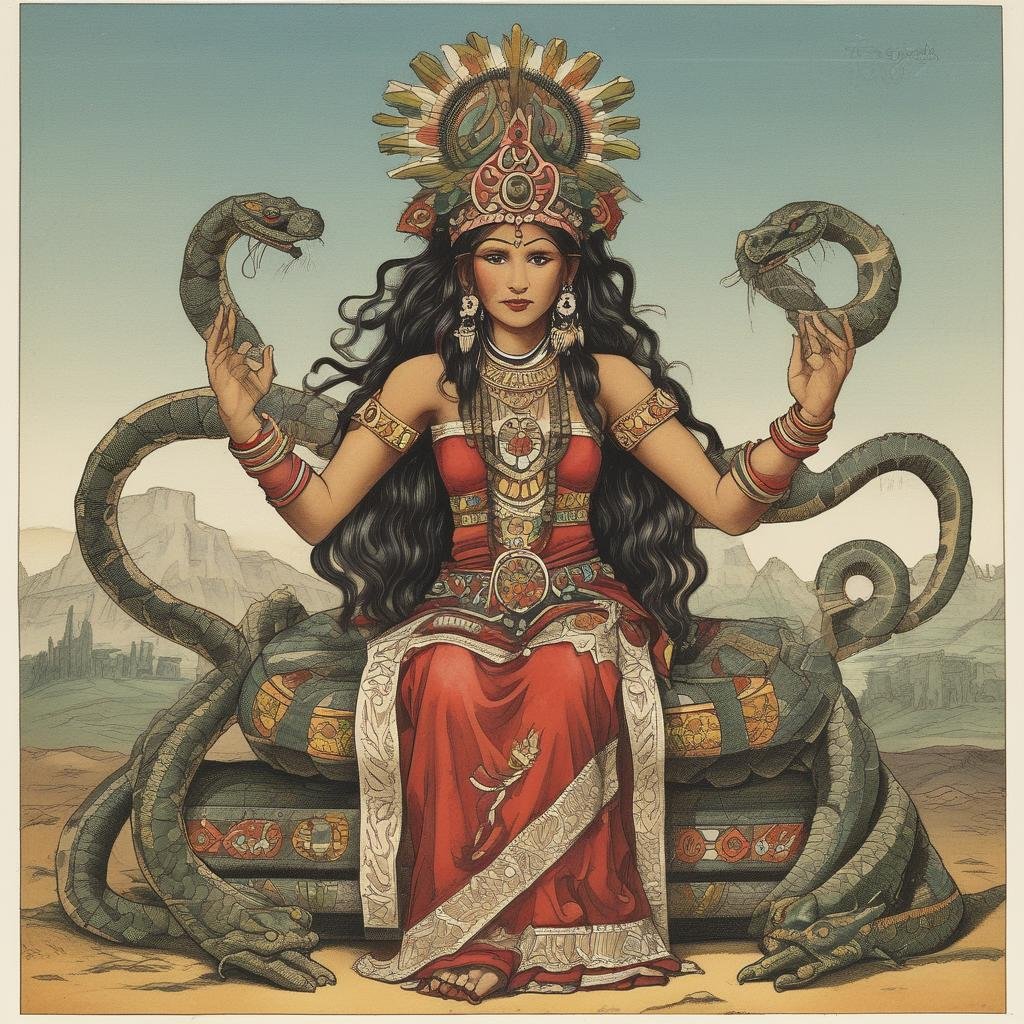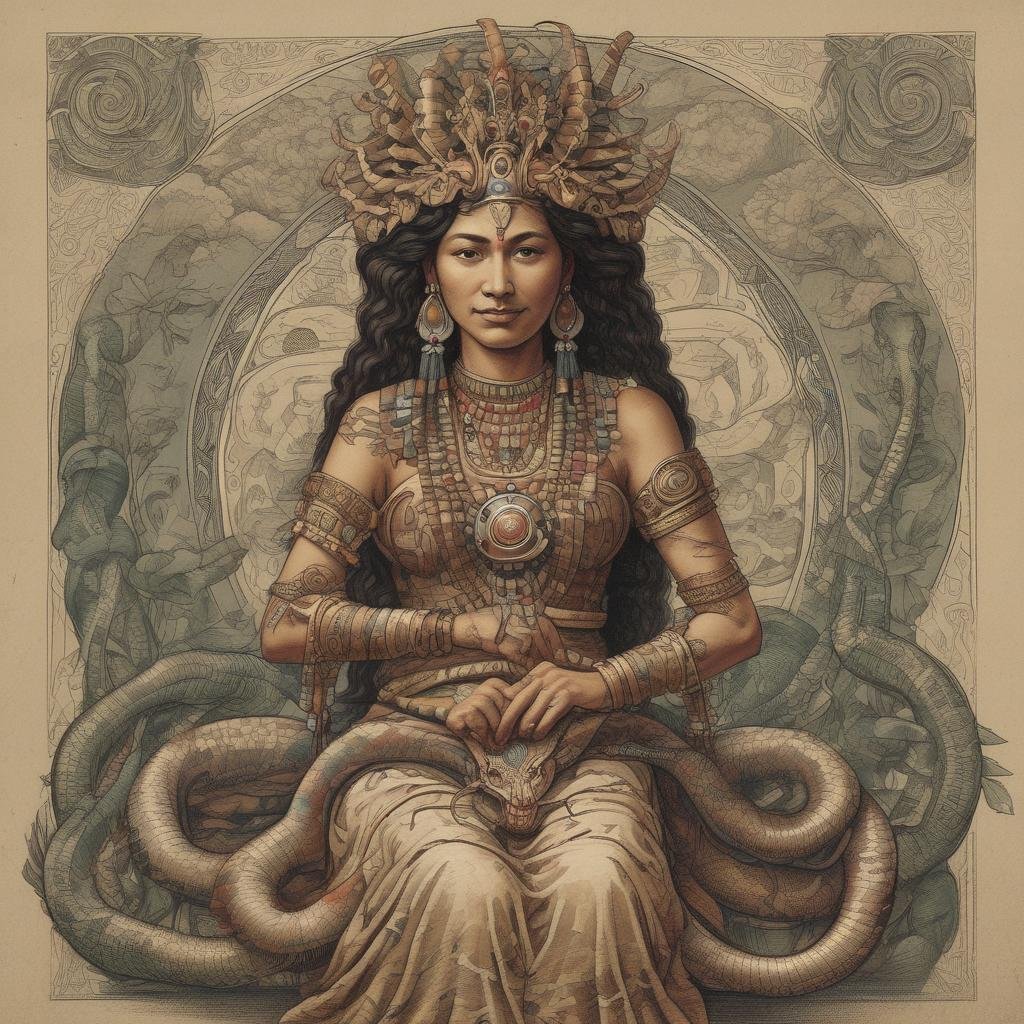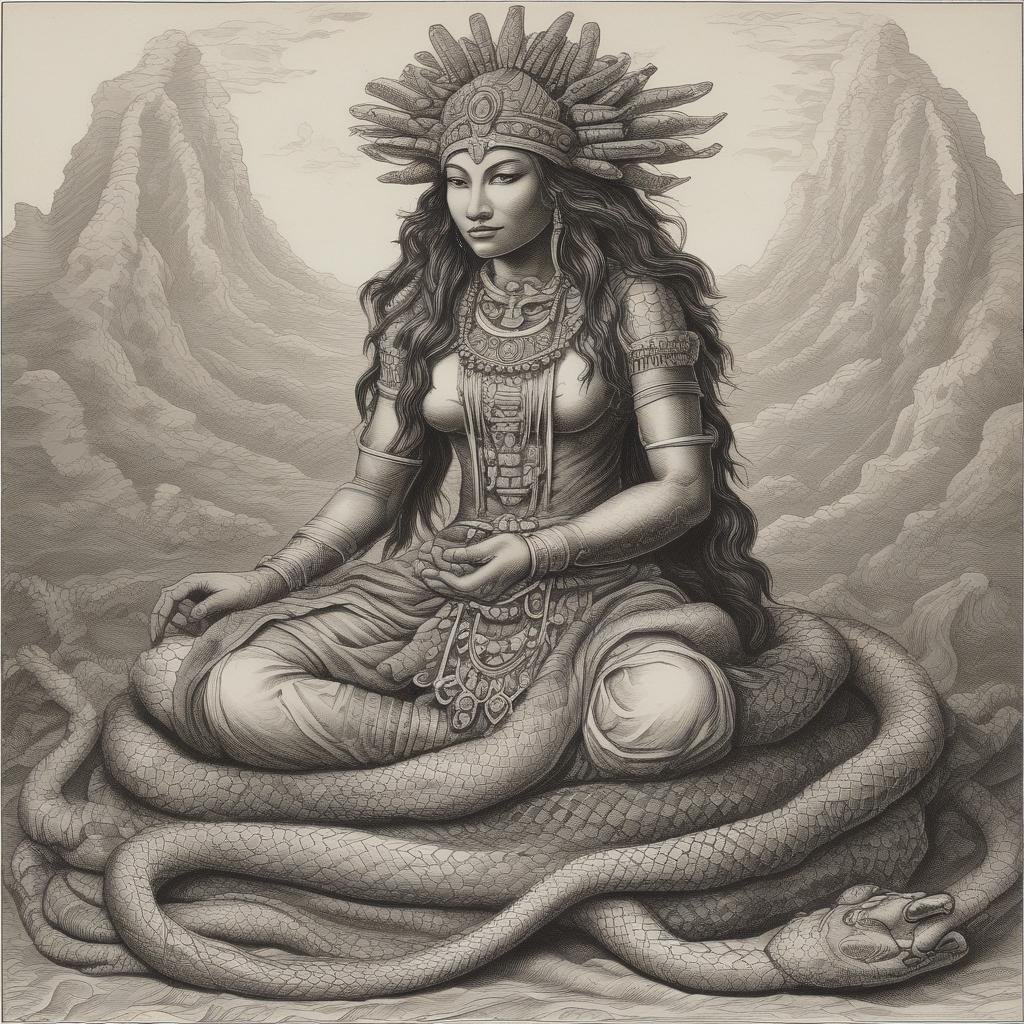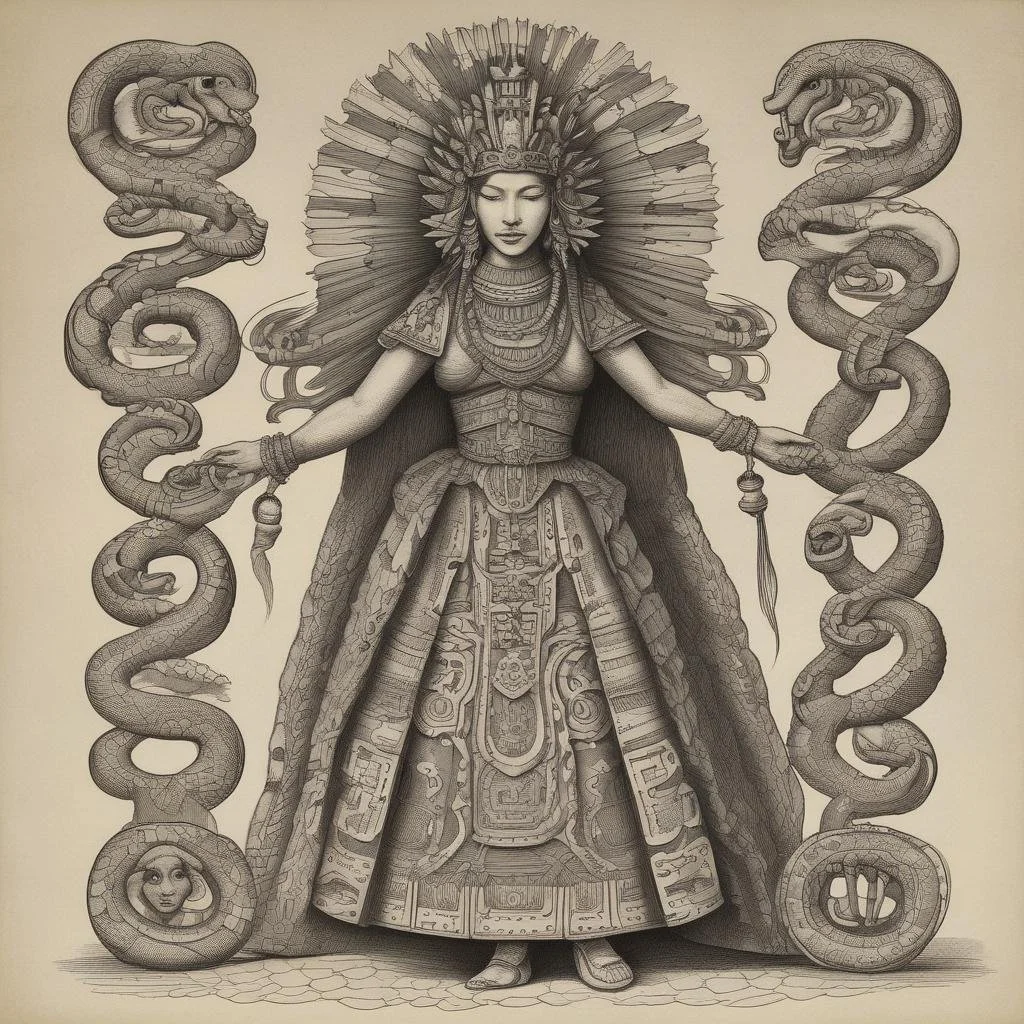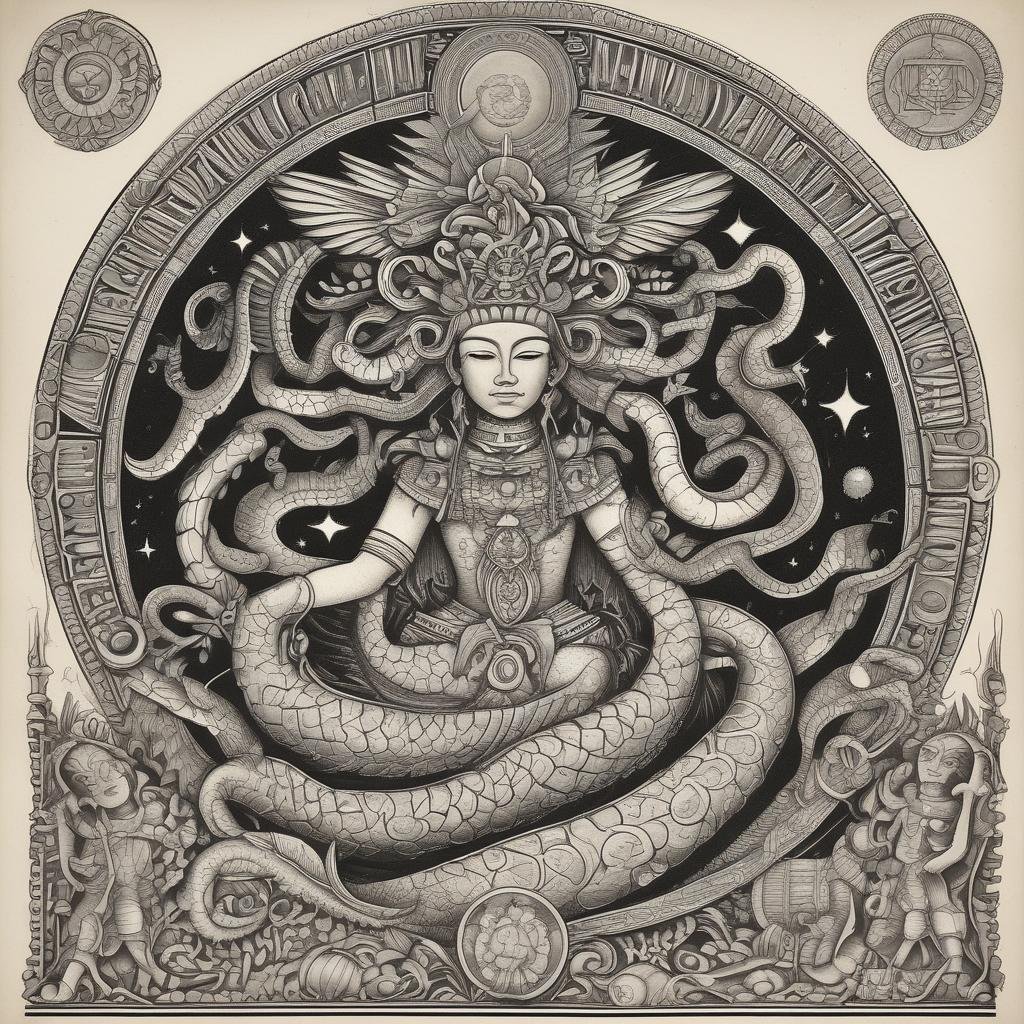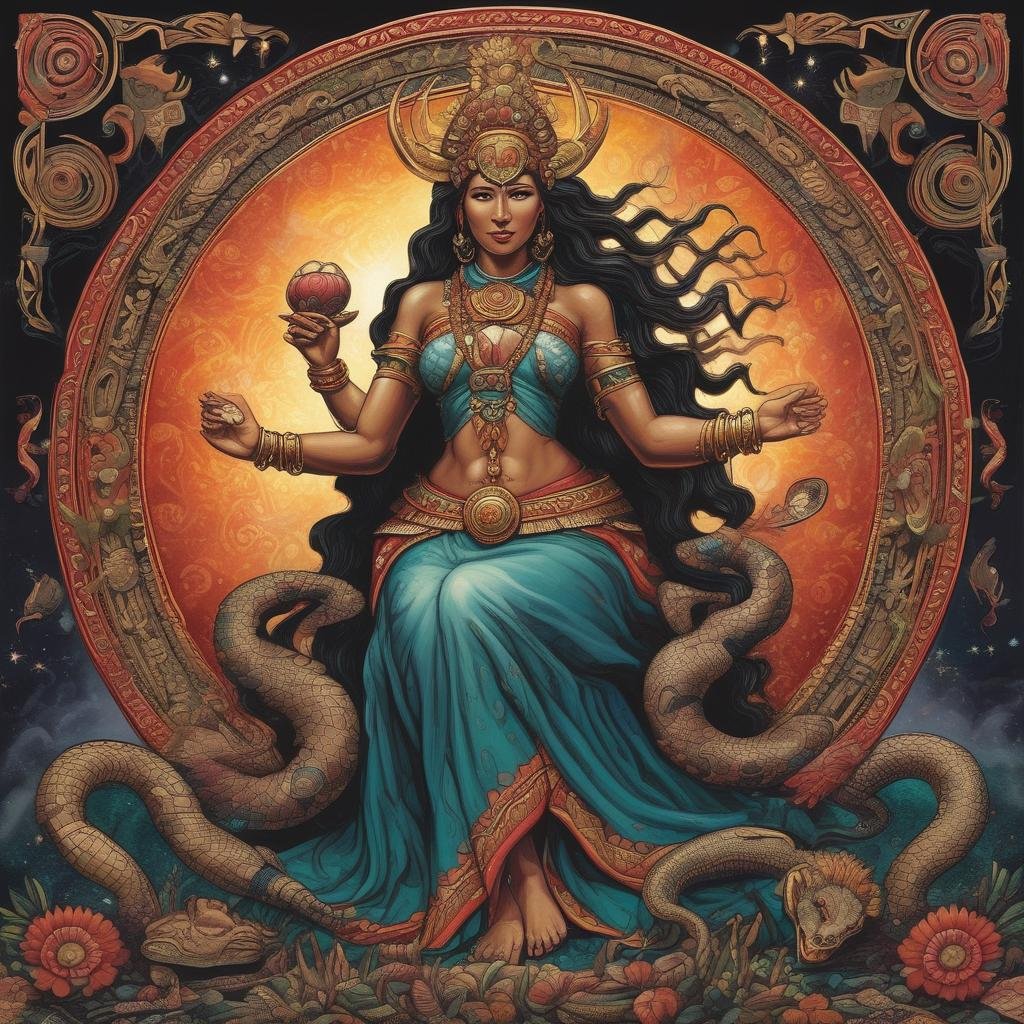Coatlicue
Cōātlīcue
Coatlicue, whose name means "She of the Serpent Skirt," is a powerful Aztec goddess representing the earth, fertility, life, death, and regeneration. She is the primordial mother of gods and humans, most notably the mother of Huitzilopochtli, the god of war and the sun.
Often depicted wearing a skirt of snakes and a necklace of human hearts and hands, she embodies the dual nature of creation and destruction, nurturing life while also facilitating death and transformation.
As a symbol of the cyclical forces of the universe, Coatlicue's fearsome yet nurturing persona reflects the earth’s ability to give life and reclaim it in death, making her central to Aztec cosmology and spirituality.
How she helps us find healing and strength . . .
Coatlicue, as a symbol of the earth’s cycles of life, death, and rebirth, offers profound messages to modern women about embracing the complexity of their own nature and the cycles they experience. Her messages might include:
Embrace your duality: Coatlicue embodies both creation and destruction, reminding modern women that it is natural to hold seemingly opposing forces within themselves—nurturing and fierce, vulnerable and powerful. Accepting these dualities can foster inner strength and balance.
Honor the cycles of life: Coatlicue teaches that life is cyclical, with periods of growth, decay, and regeneration. Modern women can find wisdom in honoring the different phases of their lives—whether physical, emotional, or spiritual—by recognizing the importance of each stage in their personal evolution.
Find power in transformation: Like the earth she represents, Coatlicue undergoes constant transformation. She encourages women to embrace change, recognizing that even in the face of loss or endings, there is always the potential for renewal and new beginnings.
Ground yourself in nature: As an earth goddess, Coatlicue reminds women of the importance of connecting with nature for healing and grounding. In the chaos of modern life, finding time to connect with the earth’s energy can offer strength, stability, and peace.
Honor the divine feminine: Coatlicue's maternal, life-giving energy encourages women to honor their inherent feminine power. Whether through creativity, nurturing, or leadership, she invites women to celebrate the sacredness of the feminine within themselves and the world.
Own your fears and shadows: Coatlicue’s fearsome appearance represents the darker, shadow aspects of life. She urges modern women to face their fears, traumas, and shadow selves with courage, knowing that true healing and transformation come from integrating all parts of themselves.
These messages speak to the journey of self-acceptance, empowerment, and transformation that Coatlicue embodies, offering modern women timeless wisdom for navigating their lives with strength and grace.
Mother of the Gods
Coatlicue's mythology is one of profound cosmic drama, blending themes of creation, destruction, motherhood, and the duality of life and death. She is a central figure in Aztec cosmology, particularly in the story of the birth of her son Huitzilopochtli, the god of the sun and war, and the conflict that surrounded it. Here’s a look at her key myth:
Coatlicue, often referred to as "Mother of the Gods," is a primordial earth goddess associated with fertility, life, and death. She is said to live on Coatepec, the Serpent Mountain, where she performed penance to maintain the universe. One day, while sweeping the temple, she found a ball of hummingbird feathers that she tucked into her waistband. Miraculously, she became pregnant with Huitzilopochtli, a powerful god who was destined to be a great warrior.
The Birth of Huitzilopochtli
Coatlicue’s pregnancy enraged her daughter Coyolxauhqui, the moon goddess, and her other 400 children, the Centzon Huitznahua, gods of the stars. They were furious at the idea of their mother giving birth again, especially to a new and powerful deity. Led by Coyolxauhqui, the 400 siblings conspired to kill Coatlicue, believing it would preserve their honor.
As they approached Coatlicue on Coatepec to carry out the murder, Huitzilopochtli, fully armed, was born in a flash of light. He emerged as a fully-grown warrior, wielding a xiuhcoatl (fire serpent weapon). In a fierce battle, he decapitated Coyolxauhqui, flinging her head into the sky, where it became the moon. This act symbolized the eternal struggle between the sun and the moon, representing the cycle of night and day. Huitzilopochtli then chased away or killed the other 400 star gods, symbolizing the dominance of the sun over the stars in the sky.
